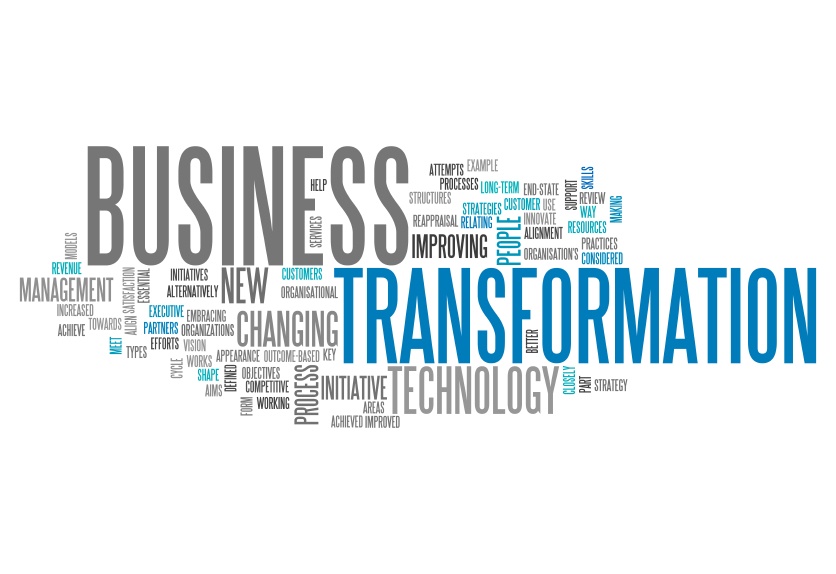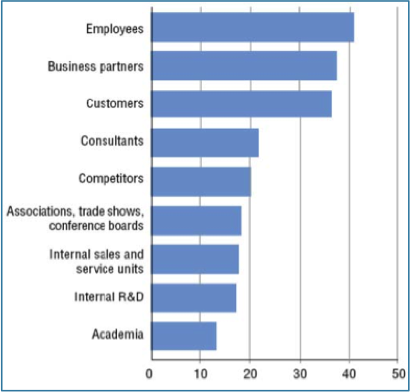In recent workshops conducted by us, Simon Associates (SAMC), several questions repeatedly came up which reflected a common theme: CEOs are finally realizing that they need to build a culture of innovation into their company’s traditional operating systems.
Typically, the core competency of a company is the antithesis of a creative, innovative organization. Their strength is and has been the effectiveness and efficiencies of their well-oiled machine—those processes, procedures and teams of employees (and their skill sets) who are very good at what they have always done. And more often than not, their board or senior executive team are very comfortable with those same traditions that brought them to where they are today.
Two Cases That Could Be You!
In one such case, the CEO was a professional manager in a distribution company. The industry is not important. He was dealing with a family firm board that was focused on current revenue and profits from existing lines of business. While they were entering commoditization and price pressures, they were satisfied with incremental innovations to their well-established business model. What he could see in his future lens was the power of Amazon stores challenging old-line distribution channels and young purchasing agents looking for the best price—but online. He recognized that the traditional value of distributors was under siege, but the family could not see it.
There was a similar situation in another client of ours, a cement manufacturer. Despite their growth strategy through acquisitions, they were very stuck on carrying out their business the way it had always been done. Demand was not growing and acquisitions were not generating the expected returns on investments. What to do, they asked, to build more innovation into their organization? And more customer value at lower costs?
I could certainly add other stories, but the lesson here is less about industry or company than culture, vision and attitudes toward change. In all-too-many situations, the CEO realizes that there are risks to staying the same but he/she is unsure of how to proceed into the unknown before them.
Stick to Your “Competitive Advantage” or Develop “Transient Advantages”?
Today’s typical challenge: How can you sustain current growth while searching for new markets at the same time. This is as much a question about “How do I innovate or change” as it is about “What do I change?”
As we have heard these questions again and again, we’ve begun to realize how closely they align with our basic premise at SAMC, which is this: As times change, only the most adaptive will survive. Indeed, it is the most adaptive that have this wonderful ability to “see, feel and think” about their business in new ways, with those fresh eyes that are needed during changing business environments.
And this is exactly what businesses are facing today, an ever-faster pace of innovation and obsolescence. Just read Rita McGrath’s new research on “The End of Competitive Advantage” or her article in Harvard Business Review, “Transient Advantage.” Another great piece to check out is the HBR article by Larry Downes and Paul Nunes on “Big Bang Disruption.” As Blue Ocean Strategists, we are constantly working on finding new market space and unmet needs than can lead companies, like the ones mentioned here, in new growth directions.
What to do? The challenges these CEOs were expressing are real. So how can they rigorously apply innovation in their organizations without interfering with today’s business?
Business Change Models
Maybe there are some options out there to consider that could work for you. And I say options because there is no one size that is perfect for everyone, but parts of these might work for your company. Here are three to consider for your own organization.
1. Who are the right people for change? Not everyone is comfortable with uncertainty. Staff members need to know who can run the daily operations and who can enjoy being an entrepreneur in a corporate setting. The first thing to determine is whether or not you are ready for change. Myers-Briggs isn’t a bad place to start in order to identify what kind of personalities you have and how they might fit into a more innovative culture. Or perhaps you need to assess your culture using the ocai-online.com tool.
2. Separate units versus all hands on deck. Think about it. How smart was P&G to turn their brand managers into innovative thinkers who are responsible for both growing the brand and adding new value to them? The results over the past three years has been mixed, with competition coming from everywhere.
Is Toyota’s culture of innovation the right one for others to mimic, with its “hard innovations” matched by a culture of “soft innovations”?
Or should innovation come from a separate R&D unit, like Samsung has? “What we know from this is how Samsung approaches innovation. It is not a competitive race, as it seems to be in Apple, or based on giving engineers more bench time as it is at Google. Rather it is based on developing a creative elite,” reads a company statement.
3. Have a crisis or create one. A third option arises when the core business breaks down. We had one client whose major customer was the US Department of Defense. As defense spending was reduced, our client realized significant drops in volumes. The result was an all-hands-on-deck innovation process to help the entire organization re-think its business and open new markets. The good news is that for them, the crisis is doing that for them. New ideas are turning into new innovations—not that they had much choice. In the thick of a crisis, rather than fail, they found abundant new ideas, new markets and new ways to package and promote their products.
Where Do the Best Ideas Come From? All Around You!
This quote from John Seeley Brown, Director of Xerox Research Center at the time, says it so well: “…the way forward is, paradoxically, not to look ahead but to look around.”
This chart reveals that he may be right. Great, breakthrough ideas may come from all around you. Can you see them?
More often than not, employees, business partners and customers offer the best opportunities for new ideas, with internal R&D way down the list of idea-generators. Who better to “see, feel and think” about customers and their needs than those customers, business partners and most of all, the employees serving them daily?
What is right for your specific organization? Many mid-market companies whom we’ve worked with have, willingly or not, come to the realization that creativity and innovation are not going to easily bubble up from the traditional, operations-driven team. This has led many of them to create a unit solely focused on opening new markets and creating new incremental, market-changing innovations. (In some cases, they’ve even asked us to become their innovation center.)
Fad or Competitive Advantage?
As I write this for those CEOs and others who read our blogs, I hope you’ll take a moment to assess your own organization’s culture today see how poised you are for future growth. The CEO of Cisco was recently interviewed on Bloomberg Surveillance. He said he used to have strategies that lasted 5 years. Now they are down to 3 year strategies.
Change is no longer a matter of “someday.” It is becoming an essential of every day. And those of you who are sticking to your “competitive advantage,” watch out for some disruptive innovator right behind you. Think of Uber. The times are changing so quickly that the plans you have today should be more like fads used to be—shorter-term solutions which emerge, surge and purge before you even know it.
If you only take away one thing from this blog, let it be this: Now is the time to get out in front of the wave of change and successfully ride it. Otherwise, prepare to be swept aside.
We’d Like To Show You How To Change And Grow Your Business
Simon Associates is all about helping organizations adapt to changing times. If you’d like to discuss how we could help your business thrive in these rapidly changing times, please contact us at your convenience.




